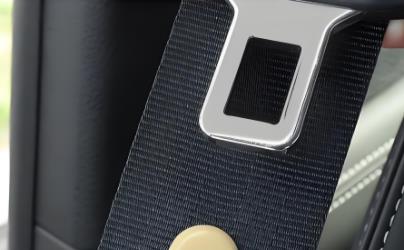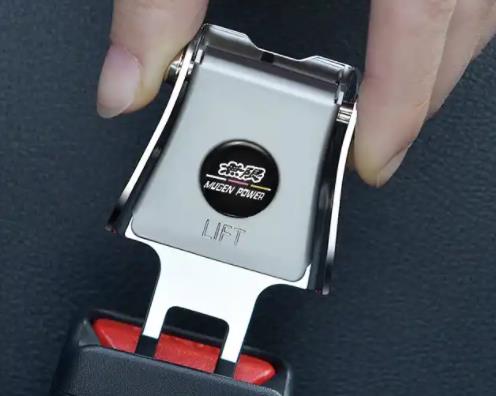In a collision, a passenger's life ultimately hinges on a few square centimeters of metal. When that critical component is the automotive seat belt buckle—a device tasked with instant, flawless operation under extreme forces—do you truly comprehend the monumental engineering behind its deceptively simple click? The difference between a standard and a high-precision buckle is not merely cosmetic; it dictates the very margin of safety, the outcome of a crash test, and ultimately, human survival. Many view it as a simple stamped piece of metal, yet underestimating its engineered perfection is a gamble with lives. This is a risk we at Rapid Model absolutely reject, because when it comes to safety-critical components, precision isn't just a preference—it's an imperative!

Demystifying the Lifesaver: Core Definitions
Automotive Seat Belt Metal Buckles are far more than mere latching mechanisms. They represent a marvel of mechanical engineering, designed to withstand astronomical forces, resist corrosion for decades, and provide a tactile, reliable user experience every single time. This isn't just metal forming; it's a relentless pursuit of zero-failure performance under the most violent conditions imaginable!
What Defines an Engineering-Grade Buckle?
The soul of a superior buckle lies in its predictable failure mode and ultimate tensile strength. It begins with FEA simulation, modeling stress distribution under multi-directional impact loads; and is realized through precision machining that guarantees perfect tolerances for the latch and spring mechanism. Imagine the forces in a high-speed crash—the buckle must not only hold but must do so without deforming, jamming, or releasing. This is a testament to the non-negotiable synergy between material science, mechanical design, and micrometric manufacturing!
High-Performance Buckle Material Examples
| Material Type | Key Characteristics & Applications | Why It Matters |
|---|---|---|
| Case-Hardened Steel Alloys | Standard for high-strength latch components | Provides a hard, wear-resistant surface with a tough, shock-absorbing core |
| Stainless Steel (304/316) | Corrosion-resistant buckles for harsh environments | Ensures reliable operation and aesthetic appeal over the vehicle's entire lifespan |
| Precision Zinc Alloys | Cost-effective components for non-critical structural parts | Offers good castability for complex shapes and excellent corrosion resistance |
Engineering the Perfect Buckle: The Triad of Strength, Reliability, and Usability
Designing a safety-critical buckle is a high-stakes balancing act. It must be incredibly strong yet lightweight, utterly reliable over thousands of cycles, and provide intuitive, satisfying feedback to the user. We've seen prototypes fail catastrophically due to a microscopic stress concentration invisible to the naked eye. Selecting the right alloy is just the prelude to a symphony of precision engineering!
Key Performance Attributes of a Buckle
| Attribute | Description | Rapid Model's Focus |
|---|---|---|
| Ultimate Tensile Strength | The maximum stress the buckle can withstand before fracture | Exceed automotive industry standards with a significant safety margin |
| Cycle Life & Fatigue Resistance | Number of reliable engage/disengage cycles over its lifetime | Design and test for decades of use without performance degradation |
| Release Force & Tactile Feedback | The precise force required for a smooth, intentional release | Optimize spring mechanics and surface finishes for perfect user experience |
| Corrosion Resistance | Ability to withstand salt spray, humidity, and temperature cycles | Utilize materials and coatings that pass stringent salt spray testing |
The Invisible Enemy: Stress Concentration and DFM
Achieving a buckle that looks simple but performs flawlessly is riddled with hidden challenges. A radius that is a fraction of a millimeter too small, a surface finish that is slightly too rough, or heat treatment applied incorrectly—any of these can create a nucleation point for catastrophic failure. Furthermore, the complex interaction between the latch, spring, and housing requires tolerances that demand the pinnacle of CNC machining. At Rapid Model, we employ multi-axis machining and micro-finishing processes to ensure that every buckle component not only meets the print but exceeds the grueling demands of real-world use.

How Rapid Model Forges Reliability: Precision for Prototyping and Beyond
At Rapid Model, our mission is clear: to deliver safety-critical components with uncompromising precision at prototype speed. For a buckle undergoing design validation or low-volume production, there is no room for error, and no time to waste.
Advanced Machining for Complex Geometries
For buckle prototypes and components, our 5-Axis CNC Machining Centers are indispensable. They allow us to machine the complex, organic curves and critical internal features of a buckle housing in a single setup, guaranteeing perfect alignment and eliminating the variability of multiple fixtures. But true precision goes deeper! We implement micro-machining strategies and specialized tooling to achieve the surface finishes and sharp, clean edges required for seamless spring and latch operation, turning a digital model into a perfectly functional physical part in record time.
A Culture of Zero-Defect Quality Control
Our quality protocol for a safety component is, by necessity, obsessive. Every batch of buckle parts undergoes 100% dimensional inspection using CMMs to verify that every critical tolerance is held. We go beyond, employing dye penetrant testing or micro-CT scanning to detect surface and sub-surface flaws that are invisible to the eye but could compromise integrity. This relentless pursuit of perfection ensures that every component we deliver is worthy of its life-saving role.
From Digital Model to Tested Prototype in Days
We understand that your development schedule is critical. Rapid Model is built on a foundation of radical transparency and agile response. Our quotes are clear and detailed, breaking down the costs of specialized materials, precision machining, and our rigorous validation processes. We provide regular updates, ensuring that your buckle prototype moves from our machines to your testing rig in the shortest possible time, without any compromise on the quality that safety demands.
Choosing the Right Partner for Your Safety-Critical Components
The choice of who manufactures your buckle prototype is as critical as the design itself. Entrusting this component to a vendor who lacks the necessary precision or quality culture isn't just a project risk—it's an ethical lapse.
Why Rapid Model is the Engineered Choice
| Your Need | Our Solution |
|---|---|
| Ultimate Reliability & Strength | Precision CNC machining from high-strength alloys, validated by FEA and physical testing |
| Accelerated Development Timeline | Rapid prototyping services that deliver functional, high-fidelity parts in days, not weeks |
| Uncompromising Quality Assurance | A zero-defect mindset backed by advanced metrology and non-destructive testing techniques |
Partner for Safety, Partner for Speed
When the component in question is a seat belt buckle, the stakes are at their highest. Rapid Model is more than a machine shop; we are your dedicated partner in safety-critical innovation. We bring the technical expertise, cutting-edge technology, and an unwavering ethical commitment to quality that your project demands.
Partner with us, and gain the confidence that your prototypes are built to the highest standard of precision and reliability, enabling you to validate your designs faster and with absolute certainty.
Contact Us Now to Discuss Your Seat Belt Buckle Project and Receive an Instant Quote!



